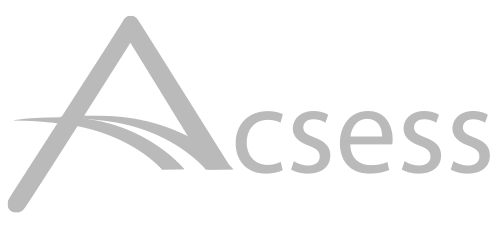As a recruiter managing skilled workers, do you understand the role you play in workplace health and safety?
With Safety and Health Week approaching, it’s an ideal time for everyone—from employers and employees to recruiters and HR teams—to learn more about preventing injury and illness at work. Although recruiters have a more indirect relationship with workplaces, it’s still vital to understand basic health and safety practices and understand how you can support safer conditions for the candidates you manage.
Let’s start with the basics. Then, we’ll explore how recruiters can promote health and safety in the skilled trades through everyday actions.
Why workplace safety matters
The importance of health and safety is a no-brainer. We all want to work somewhere safe, and it’s especially important for workers in the skilled trades, who often face significant risks in their roles. For anyone involved in managing skilled workers—whether you’re a business leader, a recruiter, or an HR professional—it’s a moral imperative to prioritize the health and safety of employees.
Beyond the ethical implications, there are additional benefits to maintaining high safety standards. Research shows that workers are happier, more productive, and more effective when they know that their workplaces are committed to their well-being. Plus, not only are companies with good health and safety records are more likely to attract and retain talent, but it tends to lead to stronger trust in their brands by the public.
Who is responsible for workplace health and safety?
Everyone is responsible for workplace safety, but responsibilities vary depending on your role. Direct managers and HR supervisors oversee high-level issues such as policies and compliance, ensuring that workplaces are adhering to all relevant rules and legislation.
As for employees and contract workers, their role is to maintain safe practices on the ground. They are responsible for the following key actions.
Reporting unsafe conditions and hazards
Workers should report any defects, health hazards, or unsafe conditions at their workplace to their supervisor as soon as they notice them. While some issues can be solved immediately, others may require new policies, processes, or equipment from management.
Wear safety equipment
Wear recommended equipment whenever required. Safety equipment is different for every role, but examples include reflectors, safety boots, hard hats, and face masks.
Work in a safe manner
Always follow safe practices. Like equipment, these will vary from workplace to workplace, but they typically include labelling hazardous products, keeping spaces clean and uncluttered, ensuring emergency exits are clear, avoiding distractions, and staying aware.
Maintain compliance
Although management is primarily responsible for compliance, everyone in a workplace plays a role in complying with health and safety policies and regulations. Workers should make sure they are aware of and understand Part II of the Canada Labour Code and occupational health and safety regulations (or the equivalent legislation in your country).
How recruiters can support better health and safety
As a recruiter, your role in worker health and safety is indirect, but still important. Here’s what you can do to support safer work environments for the candidates you manage.
Ensure teams are full staffed
One of the top ways you can support workers as a recruiter? Be great at your job.
When every skilled role is filled at a company, the workplace is safer for everyone. That’s because evidence shows that accidents are more likely to happen when companies are understaffed.
Help workers maintain their safety certifications
You can also support the skilled workers you manage by helping them stay on top of their health and safety training. By tracking candidate certifications and sending workers reminders when they need to renew or update them, you’ll help to ensure better safety on job sites. Plus, your candidates will appreciate it.
We know it’s not easy to keep track of certifications for every worker in your database, especially if you manage hundreds or even thousands of candidates. That’s where automation can help. Learn more about how Labourly tracks certifications and sends notifications automatically.
Maintain proper health and safety protocols on your own team
Don’t forget to walk the walk at your own workplace. Within your staffing agency or HR department, ensure there is widespread awareness of the importance of workplace health and safety, and that every employee is adhering to proper standards. Not only is this important for keeping your own people safe, but that awareness tends to trickle down to everything you do, including your staffing practices.
The bottom line
When a company cares about health and safety, that attitude is reflected everywhere, from its organizational culture to its values and standards. Prioritize health and safety on your recruiting team and extend that same attitude to the work you do for candidates and clients.
These practices not only communicate that the wellbeing of workers is a priority for you and your team, but it keeps it top of mind for everyone involved in staffing processes. Remember, we all play a role in supporting injury and illness prevention in skilled work.
Searching for a software solution for your recruitment team? Designed especially for staffing agencies and Human Resource departments, Labourly™ is a simple, intuitive solution for managing your skilled workforce. Book a demo call with our team today to explore options for your company.










